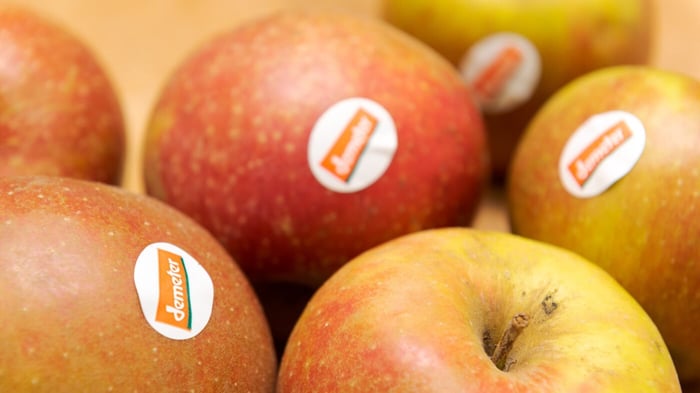Ever had that heart-stopping moment when you realize the sticker on your apple or peach wasn't where you last saw it? Yep, you just ate it. Before freaking out, let's talk through it.
Imagine this: You're relaxed on a sunny beach, enjoying a juicy peach. Suddenly, you realize the sticker that was once on your fruit is now journeying through your digestive system.
Understanding the Panic
Now don't get ahead of yourself with worry - you're probably going to be just fine. Although eating one of the stickers on fruit is not ideal, it won't harm you. Your body won't be able to digest it, but you should be able to 'expel' it just fine through your normal body function.
Max Teplitski, PhD, the chief science officer at the International Fresh Produce Association (IFPA), says that 'fruit stickers aren't meant to be eaten, but eating just one shouldn't have any negative effect on your health.'
That said, of course you don't want to be purposely eating them every time you bite into an apple or peach.
Purpose of Fruit Stickers
So what are fruit stickers for? They were introduced in the late 80s by the Produce Marketing Association.
First they are a way to give pricing information for fresh products that don't have additional packaging. Most of these stickers have little barcodes that scanning equipment in grocery stores can read.
Secondly, the stickers usually have information that helps cashiers know exactly what type of produce it is without having to look it up somewhere.
Think about the various types of apples available. They can mark organic apples with a unique code for example. This data helps the store know what exact fruits are being sold, what they need to restock, and also let's them price them differently.
Organic produce has a five-digit code beginning with either 9 or 84, while conventional produce either starts with a 3 or 4 or has a five-digit code starting with 83.
What are These Stickers Made of?
Although fruit stickers look like very simple products, they are actually quite well designed. They have to be able to hold up to washing, and transportation. According to Teplitski, they are made up of three parts:
- The actual sticker material, typically a polypropylene.
- Food-grade ink.
- A food-grade adhesive, often derived from synthetic polymers or natural sources like starch.
Food grade simply means that they cannot contain toxic chemicals that could cause health problems when they come in contact with food products.
But here's the kicker. Most of these stickers aren't environment-friendly. They aren't compostable or biodegradable.
This means that they should not be discarded with other food waste if possible. Many industries are catching on to this and actually developing compostable stickers.
Some additional innovations are in the works too, like laser etching the codes directly onto fruits with thicker skins or peels - completely eliminating the stickers.
The Aftermath of Eating a Sticker
So what if you do accidentally swallow a fruit sticker?
While they are made with food safe materials, they aren't snack worthy!
If it's a once in a blue moon occurance, it's not likely going to be a health concern. That said, if you do feel sick afterwards, check in with your doctor.
Wrapping Up
The bototm line is that eating a fruit sticker isn't usually a big deal. Of course try not to, but if it happens don't sweat it.
Keep an eye out for them, and remember their purpose and journey.






